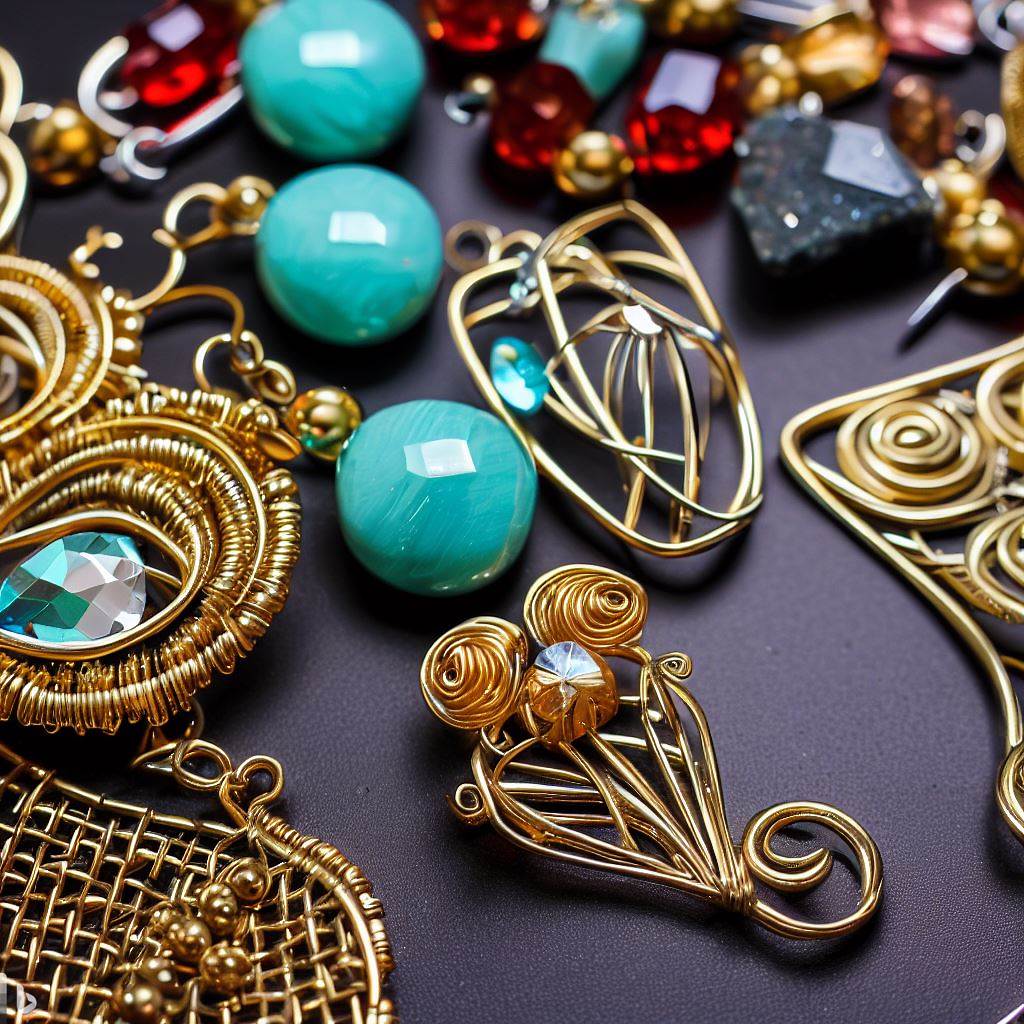Handmade Wire Wrapped Jewelry: Techniques for Stunning Pendants and More
Introduction
Wire wrapping is a jewelry making technique that uses metal wire to create intricate and beautiful pieces of jewelry. It is a relatively simple technique to learn, but it can be used to create a wide variety of designs.
Wire wrapped jewelry is often made with gemstones, beads, and other small objects, but it can also be made with simple wire coils and spirals. The possibilities are endless!
In this article, we will explore the basics of wire wrapping, as well as some more advanced techniques. We will also provide some tips on how to choose the right materials and tools for wire wrapping, and how to care for your finished jewelry.
History of Wire Wrapping
The history of wire wrapping is long and rich. The earliest known examples of wire wrapped jewelry date back to the Bronze Age, and the technique has been used in many different cultures around the world.
In ancient Egypt, wire wrapping was used to create amulets and other religious jewelry. In the Middle Ages, wire wrapping was used to create jewelry for royalty and nobility. And in the Renaissance, wire wrapping became a popular way to create jewelry for everyday wear.
Today, wire wrapping is still a popular jewelry making technique. It is a versatile technique that can be used to create a wide variety of designs, and it is a relatively easy technique to learn.
Basic Wire Wrapping Techniques
The basic wire wrapping technique is to wrap the wire around a gemstone or other object in a spiral pattern. This creates a secure and sturdy base for the object, and it also allows you to create a variety of different designs.
To start, you will need a piece of wire that is about twice as long as the object you are wrapping. The wire should be a bit thicker than the object, so that it will hold its shape.
Once you have your wire, you will need to make a simple loop at one end. This loop will be used to attach the wire to the object.
To make the loop, simply bend the wire in half and twist the two ends together. Then, trim off the excess wire.
Once you have made the loop, you can start wrapping the wire around the object. The first few wraps should be tight, to secure the object to the wire.
After the first few wraps, you can start to loosen up the wraps. This will allow you to create a more organic and flowing design.
Once you are happy with the design, you can trim off the excess wire.
Advanced Wire Wrapping Techniques
There are many advanced wire wrapping techniques that you can use to create more complex and intricate designs. Some of these techniques include:
- Trinket wire: Trinket wire is a type of wire that is thinner than regular wire. It is often used to create delicate and intricate designs. Trinket wire is often used to create wire wrapped jewelry that looks like flowers or vines.
- Wrapped loops: Wrapped loops are a type of loop that is created by wrapping the wire around itself. They are often used to create a more secure attachment for gemstones and other objects. Wrapped loops can be used to create a variety of different designs, including simple loops, spirals, and even flowers.
- Peyote stitch: Peyote stitch is a type of bead weaving technique that can be used to create intricate patterns. It is often used to create wire wrapped jewelry that looks like fabric. Peyote stitch is a complex technique, but it can be used to create stunningly beautiful jewelry.
Choosing the Right Materials and Tools
When choosing materials for wire wrapping, it is important to consider the type of jewelry you want to create. For example, if you want to create delicate jewelry, you will need to use thin wire. If you want to create more durable jewelry, you will need to use thicker wire.
You will also need to choose the right type of wire for the project. Some types of wire are better suited for wrapping gemstones, while other types of wire are better suited for wrapping beads.
In addition to wire, you will also need some basic jewelry making tools. These tools include wire cutters, pliers, and a jewelry saw.
Caring for Your Finished Jewelry
Wire wrapped jewelry is relatively easy to care for. You can simply wipe it down with a soft cloth to remove any dirt or dust.
If your jewelry gets wet, you can dry it with a hair dryer on the cool setting.
You should avoid wearing wire wrapped jewelry in water, as this could cause the wire to corrode.
Conclusion
Wire wrapping is a versatile jewelry making technique that can be used to create a wide variety of designs. It is a relatively simple technique to learn, and it is a great way to use up leftover wire and beads.
If you are interested in learning more about wire wrapping, there are many resources available online and in libraries. You can also find classes and workshops taught by experienced wire wrappers.
